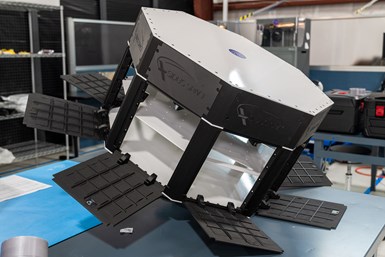 Additive Manufacturing. Functional Prototypes. Metal 3D Printing is growing in popularity and can be referred to in different ways. As more and more companies choose metal 3D printing and different technologies become available, sometimes a step back to the basics can clear up any confusion or misconceptions.
Additive Manufacturing. Functional Prototypes. Metal 3D Printing is growing in popularity and can be referred to in different ways. As more and more companies choose metal 3D printing and different technologies become available, sometimes a step back to the basics can clear up any confusion or misconceptions.
Why choose metal additive manufacturing?
Metal 3D printing brings a number of advantages over traditional metalworking methods. One, which is shared by all forms of additive manufacturing, is that cost per part is the same for low- and high-volume production. This allows for small production runs of custom parts at an affordable cost. Another benefit is that complexity is free. Intricate components that cost thousands to CNC and require multiple machine setups can be 3D printed with little effort for a fraction of the price. This is especially advantageous for metals that are hard to machine. Because the 3D printing process is additive, materials that are typically difficult to cut such as titanium and inconel can be printed with far less effort. Finally, metal additive manufacturing can make parts that are impossible to create any other way. This empowers engineers to design components more specifically for their function, unhindered by the typical constraints of traditional manufacturing.
How does metal additive manufacturing work?
There are many different types of metal 3D printing, and, just as with plastic printing, each is suited for different manufacturing goals. The central idea that they all share is the act of building a metal part layer by layer. Below are the four most common types of metal additive manufacturing and how they work.
Powder Bed Fusion
Printers of this family evenly distribute a fine layer of powder over a build plate and then selectively melt a cross section of the part at each layer. Some technologies you may have heard of in this category include Selective Laser Melting (SLM), Direct Metal Laser Sintering (DMLS), and Electron Beam Melting (EBM).
One advantage of powder bed fusion methods is that they can achieve very high resolutions, which is beneficial for small or more precise parts. The downside is that these machines (once facility upgrades and post processing equipment are taken into account) cost upwards of $1M USD. Additionally, users must take extra precaution as they are directly handling dangerous metal powders.
Direct Energy Deposition (DED)
DED processes involve depositing and fusing metal feedstock from a printhead to build up the layers of a part. DED machines include Electron Beam Additive Manufacturing (EBAM) and Laser Material Deposition (LMD).
DED machines are great for very large parts and, because they do not utilize metal powders, do not require the same precautions as powder-based technologies. On the downside, these printers tend to have lower resolution and are just as costly as their powder bed counterparts.
Binder Jetting
Similar to powder bed fusion, these printers distribute layers of metal powder, but instead of sintering with a laser, they dispense a binder at each layer. This creates a loosely-adhered metal part that is then sintered in a furnace to yield a final metal part. Sintering melts away the binder and uniformly heats the powder to just below its melting point, allowing the part to meld together into the final metal part.
Binder jet technology is advantageous because it can make precise parts much more rapidly than other methods. Dozens of parts can be printed at a time and then sintered in a large furnace, allowing for production-level 3D printing. Similar to powder bed fusion methods, binder jetting is very expensive and has a high barrier to entry: systems cost over $1M and require special steps to handle metal powder.
Bound Powder Extrusion
This new form of metal AM, and the method employed by the Markforged Metal X, uses metal powders bound in a waxy polymer to make parts. This metal-plastic mixture is melted and printed through a nozzle, similar to FFF 3D printing. Afterwards, to remove the non-metal particles and produce the final metal component, this “green” part is washed in a solvent and sintered in a special furnace, similar to binder jetting.
Bound powder extrusion is significantly less expensive than the other options, costing less than $200,000. It is also far safer and more user friendly; the powder is no longer hazardous when bound within the filament. One downside is that parts can take longer to make because of the multi-step process.
Metal additive manufacturing has evolved into a diverse set of processes, bringing benefits that no other fabrication methods can provide. As the price of systems continues to drop, it is only a matter of time before metal 3D printers become a common manufacturing tool. To learn about businesses that are already reaping the benefits of metal additive manufacturing, check out our case studies.
Now that you have the basics down, are you interested in how metal 3D printing can benefit your company? Click Here and an expert from The SolidExperts will be happy to help answer any questions you may have.


SUBMIT YOUR COMMENT